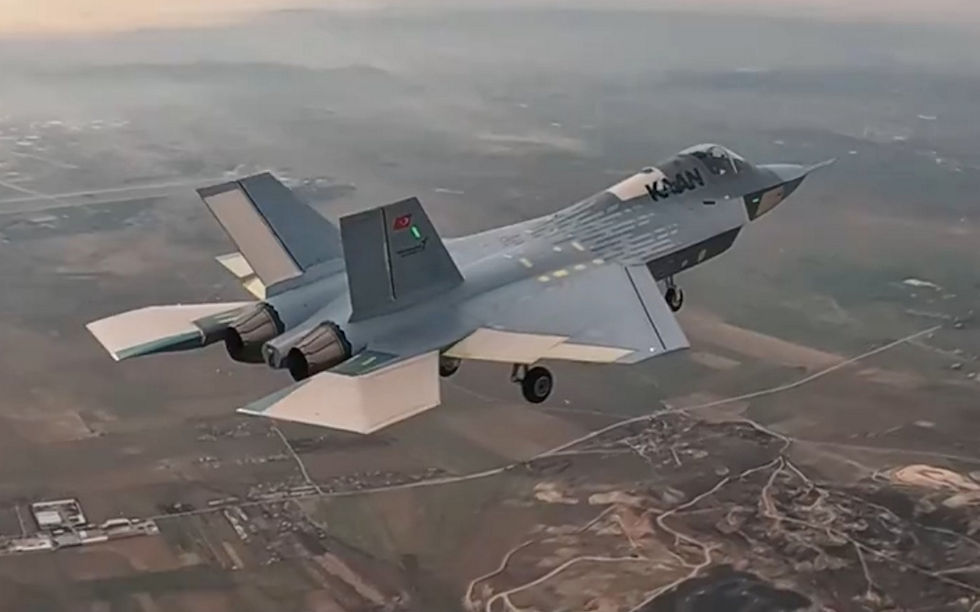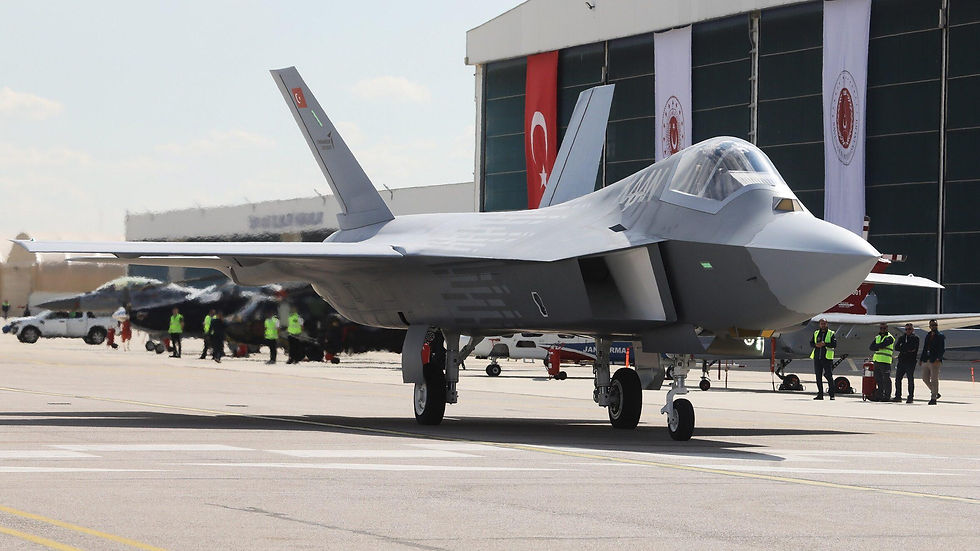Türkiye and Pakistan to Collaborate on Cutting-Edge Fighter Jet: KAAN
- Oscar Noone

- Jan 26
- 2 min read
Updated: Mar 13

In an ambitious partnership, Türkiye and Pakistan are coming together to develop a next-generation fighter jet known as the KAAN. This collaboration represents more than just military advancement—it’s a step toward technological independence and a sign of their growing prominence in aerospace innovation.
What is the KAAN Fighter Jet?

The KAAN fighter jet, developed by Turkish Aerospace Industries (TAI), is poised to disrupt the 5th generation combat aircraft scene. This stealth-capable, multirole aircraft is designed to rival advanced jets such as the American F-35 and the Russian Su-57.
So, why is the KAAN significant? Beyond its cutting-edge design and advanced capabilities, it marks Türkiye’s emergence as a potential global leader in aerospace technology. The jet will feature high-tech radar systems, exceptional maneuverability, and stealth features to evade detection.
Essentially, the KAAN is engineered to excel as a 'swing role' fighter, capable of FGR tasks (can operate as a fighter in air-to-air combat, ground attack or reconnaissance). The aircraft will incorporate state-of-the-art technologies like an Active Electronically Scanned Array (AESA) radar, AI-enhanced targeting, and a sleek design optimized for stealth. However, its significance goes beyond technical specs—it’s a bold move toward reducing reliance on foreign defense suppliers.
Türkiye and Pakistan, both of which have faced restrictions in acquiring military technology (such as Türkiye’s exclusion from the F-35 program after purchasing Russia’s S-400 missile system), are taking control of their defense needs by developing their own cutting-edge fighter.
A Factory Built for Innovation
To bring the KAAN to life, the two nations are planning a joint factory dedicated to its production. This initiative is more than just a manufacturing hub—it’s an opportunity to create jobs, advance local engineering expertise, and strengthen bilateral ties.
The factory will house advanced equipment to produce components, assemble the aircraft, and train local talent—all without relying on external sources. Similar to the UK, Italy, and Spain’s collaboration on the Tempest program, this partnership demonstrates Türkiye and Pakistan’s shared vision and trust. The goal is to have the KAAN combat-ready by the mid-2030s.
A Global Shift in Aerospace

This collaboration sends a clear message: the aerospace industry is no longer limited to a few dominant players. Countries like Türkiye and Pakistan are proving that they, too, can compete with established giants like the United States, Russia, and China.
Additionally, the project has the potential to reshape international relations. By developing the KAAN, these nations are asserting their defense capabilities and positioning themselves as contributors to global security. At the same time, the partnership fosters innovation, economic growth, and new opportunities for collaboration.
What Lies Ahead?
As construction on the factory begins, the world will watch closely to see how Türkiye and Pakistan execute their ambitious plans. Can they meet their production goals? Will the KAAN live up to its potential? What ripple effects will this collaboration have on global aerospace dynamics?
While many questions remain, one thing is clear: the introduction of the KAAN signals a shift in the defense industry, bringing fresh competition to the field of fifth-generation fighter jets. The answers to these issues will be made clear with time, but for now- we can watch with interest to see the the implications this new challenger has for international and domestic relationships.




Comments